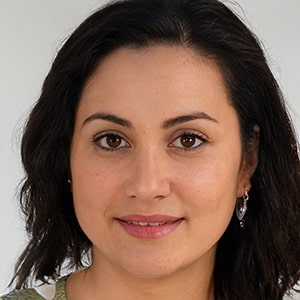The Kula ring is an example of
The Kula ring is an example of a gift exchange system. It was observed by anthropologist Bronislaw Malinowski in the 1920’s on the island of Trobriand. He noticed that one tribe would trade Kula with another, and then they would trade it back again, which led to a cycle where no items were ever exchanged for goods or money.
The Kula ring has been used as a model for understanding how small scale trading systems work today – even if there are no physical gifts involved! The Kula ring is an example of a gift giving culture that once existed in the archipelago.
The custom was to exchange necklaces made of shells and other valuables with neighboring islands, but never take anything back; this ensured that there would be plenty for everyone.
Contents
What is the purpose of the Kula ring?

In the past, it was thought that the purpose of a Kula ring was to be an exchange for goods. Today, we know that it is a form of social status. The original Kula traders were Polynesian people who would trade rings made out of shells and feathers with other groups they encountered in order to increase their social rank.
The story has been told by anthropologists like Bronislaw Malinowski who studied these tribes and found that every single one had at least one member with high status from just trading these rings! The Kula ring is a traditional token of exchange between the people living in various parts of the South Pacific.
It’s also known as an “Exchange Circle.” The purpose of these rings was to create peace and unity among the islanders, which they did by exchanging gifts from one village to another. This practice still exists today, but with less frequency due to Western influences such as Christianity and colonialism.
What is the Kula in anthropology?

Kula is an important and complex cultural phenomenon that has been studied by anthropologists for decades. It’s a system of reciprocal gift-giving, in which people from the Trobriand Islands exchange necklaces and other valuables known as “kula valuables” with their neighbors on neighboring islands.
The kula trade is used to establish social status among people, it helps promote peace between tribes, and it encourages economic trade between communities separated by water. To learn more about kula culture, read this blog post!
What is the Kula ring quizlet?

The Kula ring quizlet is a traditional form of exchange in the South Pacific Islands. It was an economy system that people used before money was invented and it consisted of items such as necklaces, bracelets, armbands and belts.
The person who owns the item would wear it for one or two months and then trade it with. Someone else by giving them something else they have created to keep their new gift. This tradition became even more important after World War II because there were now ways to buy these items instead of making them yourself.
Kula is an ancient and traditional form of exchange. It’s a circle of giving, where one person gives a gift to another, who then reciprocates with a gift for the original giver. The Kula ring quizlet was created in order to get people thinking about what they might give each other as gifts.
What is the Kula ring ceremony?
The Kula ring ceremony is an important part of the culture in Papua New Guinea. The ceremony has been practiced for centuries and it continues to be a central aspect of life, despite some changes that have occurred over time.
This blog post will explore what the Kula ring ceremony is, why it’s so important, and how it might change in future generations. Read on! The Kula Ring ceremony is a tradition that has been practiced by the Trobriand Islanders for over 2,000 years.
The islanders would exchange shells and other valuables with one another as part of their trade system. Today, the Kula ring’s tradition lives on through its symbolism in different cultures around the world.




